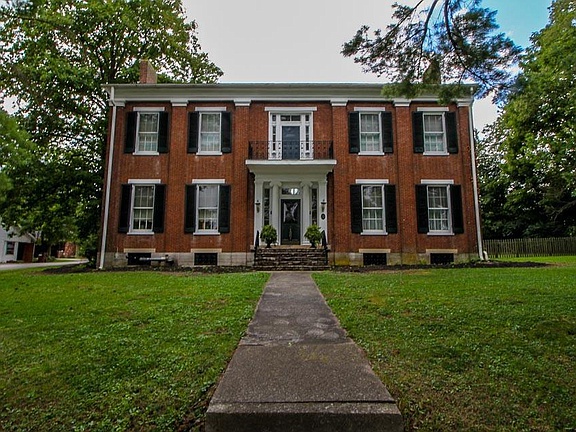The James Batterton House: Sprawling Space with a Big Place in Kentucky History
Share News:
 By Deb R. Brimer
By Deb R. Brimer
Contributing Writer
You can get lost in this 4,932-square-foot home and its rich Blue Grass history in Millersburg, Kentucky.
Located on a quarter-acre lot at 1001 Main Street, the two-story gem is filled with 19th century wow factors and current upgrades. A gorgeous wooden staircase winding from the front room is the centerpiece of the single-family home.

In addition to two more staircases, features range from a living room, parlor, formal dining area, and stainless-steel kitchen to four large bedrooms, two full baths, and stunning hardwood flooring.





On the outside is a two-car detached garage and enough lush yard space to accommodate kids running and playing and almost any sized family or social gathering. The listing price is $249,900.
Built in 1841 for James Batterton, the prominent local merchant envisioned living in the Greek Revival mansion of the day with his second wife Mary Alexander, but she kyboshed the idea. Though Main Street is a quiet part of town today, it was a major artery back then on the bustling Maysville-Lexington Turnpike. Batterton’s bride wanted to avoid the dust and buggy noise, so she refused to live that close to the road.
Since the market for mansions was likely slim-to-nonexistent in small Kentucky communities, the sprawling brick structure became a series of schools as well as a boarding house for teachers in the various institutions.
Initially, Col. T.F. Johnson established a female seminary there around 1850, which was a branch of the military school he founded at Blue Licks Springs. In 1852, Rev. John Miller, pastor of the Methodist Episcopalian Church South, opened a male and female seminary. Two years later, Rev. and Mrs. George Savage assumed control of the school, rechristened it the Millersburg Male and Female Collegiate Institute, and obtained a charter from the Kentucky Legislature.
In 1858, the Kentucky Methodist Conference took over the school and moved male students to the north side of town, where the institution became Kentucky Wesleyan College. The female school later relocated as well and changed its name to Millersburg Female College.
The Batterton House was more than a place to live and learn in the 1800s. It was a place to survive. According to local lore, the house was also a stop on the Underground Railroad, which was a network of escape routes and safe havens that abolitionists provided African-American slaves to help them reach free states, Canada, and Nova Scotia.
Two pieces of evidence in the home support the role Batterton House may have played in channeling slaves to freedom across the Ohio River. A secretive hiding place is located under a step on the back staircase, and a trap door in the dining room leads to a narrow cellar with no windows.
Want to see more of the house? Donna Thwaites with Thwaites Realtors has the listing.


Can I tour this